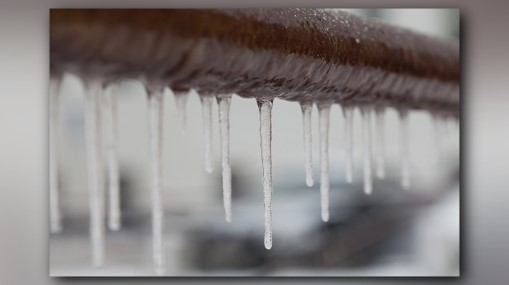Have you been on the lookout for suggestions about 6 Ways to Prevent Frozen Pipes?

Winter can damage your pipes, specifically by freezing pipes. Right here's exactly how to avoid it from happening and what to do if it does.
Introduction
As temperature levels decrease, the danger of frozen pipelines increases, potentially causing expensive fixings and water damage. Understanding how to stop frozen pipelines is important for home owners in cold climates.
Prevention Tips
Insulating susceptible pipelines
Wrap pipelines in insulation sleeves or utilize warmth tape to safeguard them from freezing temperature levels. Concentrate on pipelines in unheated or outside areas of the home.
Home heating techniques
Keep interior rooms adequately warmed, especially locations with pipes. Open closet doors to permit warm air to circulate around pipelines under sinks.
How to determine frozen pipes
Search for reduced water flow from taps, unusual smells or noises from pipes, and noticeable frost on subjected pipelines.
Long-Term Solutions
Structural modifications
Think about rerouting pipes away from outside wall surfaces or unheated locations. Add added insulation to attics, basements, and crawl spaces.
Upgrading insulation
Purchase top notch insulation for pipes, attic rooms, and wall surfaces. Proper insulation assists maintain constant temperature levels and reduces the danger of icy pipelines.
Shielding Outside Pipes
Garden tubes and outside taps
Detach and drain pipes yard hose pipes before winter months. Mount frost-proof faucets or cover exterior faucets with insulated caps.
Comprehending Frozen Pipes
What causes pipelines to freeze?
Pipes ice up when revealed to temperature levels listed below 32 ° F (0 ° C) for prolonged durations. As water inside the pipelines ices up, it expands, putting pressure on the pipe walls and potentially triggering them to rupture.
Risks and damages
Icy pipelines can result in water system disruptions, building damage, and expensive fixings. Burst pipelines can flooding homes and trigger extensive architectural damage.
Indications of Frozen Water Lines
Identifying icy pipelines early can prevent them from rupturing.
What to Do If Your Pipelines Freeze
Immediate activities to take
If you suspect frozen pipes, maintain taps open up to eliminate stress as the ice thaws. Utilize a hairdryer or towels soaked in warm water to thaw pipelines gradually.
Verdict
Protecting against frozen pipelines needs aggressive actions and quick responses. By understanding the reasons, indicators, and preventive measures, home owners can secure their pipes throughout winter.
5 Ways to Prevent Frozen Pipes
Drain Outdoor Faucets and Disconnect Hoses
First, close the shut-off valve that controls the flow of water in the pipe to your outdoor faucet. Then, head outside to disconnect and drain your hose and open the outdoor faucet to allow the water to completely drain out of the line. Turn off the faucet when done. Finally, head back to the shut-off valve and drain the remaining water inside the pipe into a bucket or container. Additionally, if you have a home irrigation system, you should consider hiring an expert to clear the system of water each year.
Insulate Pipes
One of the best and most cost-effective methods for preventing frozen water pipes is to wrap your pipes with insulation. This is especially important for areas in your home that aren’t exposed to heat, such as an attic. We suggest using foam sleeves, which can typically be found at your local hardware store.
Keep Heat Running at 65
Your pipes are located inside your walls, and the temperature there is much colder than the rest of the house. To prevent your pipes from freezing, The Insurance Information Institute suggests that you keep your home heated to at least 65 degrees, even when traveling. You may want to invest in smart devices that can keep an eye on the temperature in your home while you’re away.
Leave Water Dripping
Moving water — even a small trickle — can prevent ice from forming inside your pipes. When freezing temps are imminent, start a drip of water from all faucets that serve exposed pipes. Leaving a few faucets running will also help relieve pressure inside the pipes and help prevent a rupture if the water inside freezes.
Open Cupboard Doors
Warm your kitchen and bathroom pipes by opening cupboards and vanities. You should also leave your interior doors ajar to help warm air circulate evenly throughout your home.

Do you really like reading up on Helpful Tips to Prevent Frozen Pipes this Winter? Create a remark directly below. We would be pleased to find out your reactions about this blog. Hoping that you visit us again before long. Appreciated our write up? Please quickly share it. Let other people find it. I love your readership.
Call Today